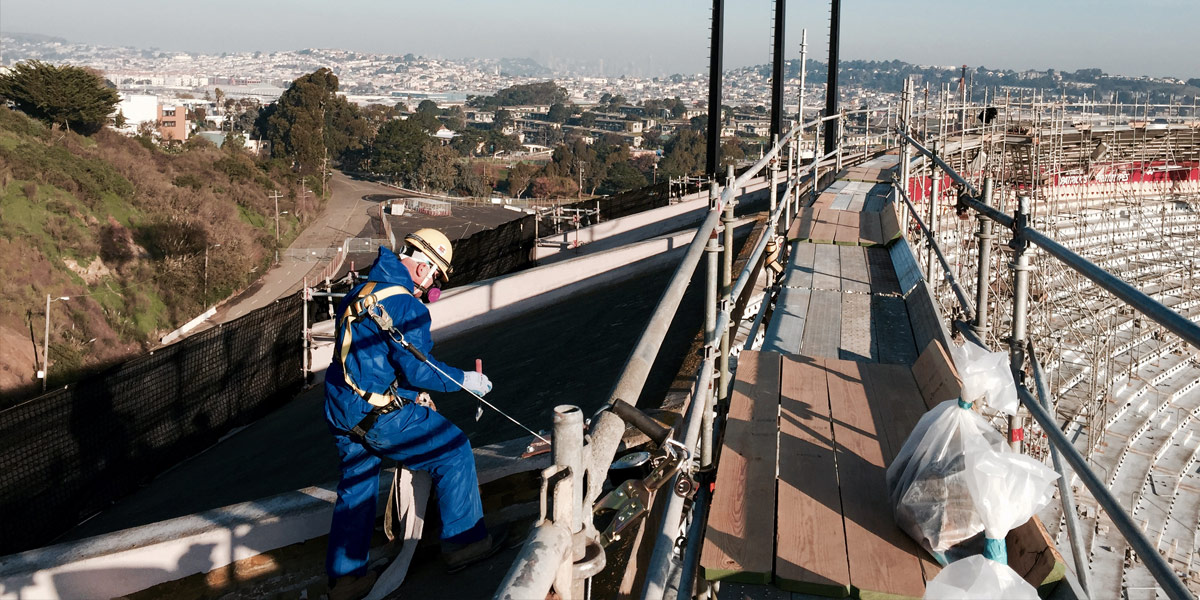Some fun facts on asbestos. Asbestos is a mineral. It is actually the State rock of California (Serpentine). It is the only rock on the planet that when pulverized turns into fibers, as opposed to sand. The fibers are incredibly strong. Asbestos fibers have the tensile strength of steel. It is precisely this characteristic of asbestos that made it arguably the greatest building material in history as a binder to countless products. Unfortunately, each fiber also has a hook like end that when inhaled can attach to our lungs and cause scar tissue. It is that unique quality that also makes asbestos a serious health hazard. Exposure to asbestos can result in severe health consequences and therefore the health risks posed by airborne asbestos led to its banishment by the EPA in 1989 and created requirements that the removal of asbestos be handled in very specific ways and only by licensed contractors with certified and highly trained workers. This is especially the case in structural remodeling or demolition projects, where special measures are required in handling, containing, removing, and disposing of asbestos-containing materials.
Our personnel have been trained and certified in all aspects of asbestos abatement. Our supervisors and laborers have all received their initial certifications and are required to refresh that training yearly. Eco Bay supplements this required training with ongoing and comprehensive OSHA, HAZWOPER, CPR/First Aid and equipment training certifications regularly. Our abatement personnel are some of the most highly trained workers in any industry.
Lead Paint is another product that was used long ago because of it’s effectiveness. The lead additive to paint made the coating dry faster, made it more durable and more resistant to moisture. Unfortunately, over time, we came to realize that lead also caused severe health issues, especially in children. De-laminated paint is a huge risk for children, because the chips have a sweet taste. There is an urban myth that the old time painters used to pour it in their coffee to sweeten their morning brew. Yikes! Because of the significant health risks related to exposure to lead, stabilization and remediation have become an important part of the abatement industry. More and more, lead based and lead containing components are being removed from structures to alleviate the potential to make people sick.
As with asbestos, our personnel have been trained and certified in all aspects of lead stabilization and abatement, including techniques and requirements for its containment, removal, disposal, and more. This training is ongoing and refreshed yearly.
PCB stands for Polychlorinated Biphenyl. PCB’s are man made chemicals that were introduced to commercial production in 1929. Because PCB’s are resistant to acids and bases, as well as to heat, they were used an an insulating material in electric equipment (transformers, capacitors, light ballasts). They were also used in heat transfer fluids, lubricants, plasticizers, surface coatings, inks, adhesives, flame-retardants, paints, caulking and sealant, and even carbonless duplicating paper. Commercial production halted in 1977. The EPA banned the use of PCB’s in 1979. However the presence of PCB’s in a wide range of building products still exists. Recently, PCB remediation has become more and more prevalent and the regulations addressing both removal and disposal have been somewhat of a moving target. Eco Bay has performed scores of projects with PCB remediation and is well versed in the evolving regulatory and waste disposal considerations.
Hazardous Materials Abatement captures a lot of different disciplines and regulatory compliance. Eco Bay is a one stop shop for almost any Haz Mat related issue. If you are in need of assistance with remediation of any kind, call us and we will assist you in determining the best course of action. If it’s not something we do, we will help you find the appropriate resource to help solve your problem.


